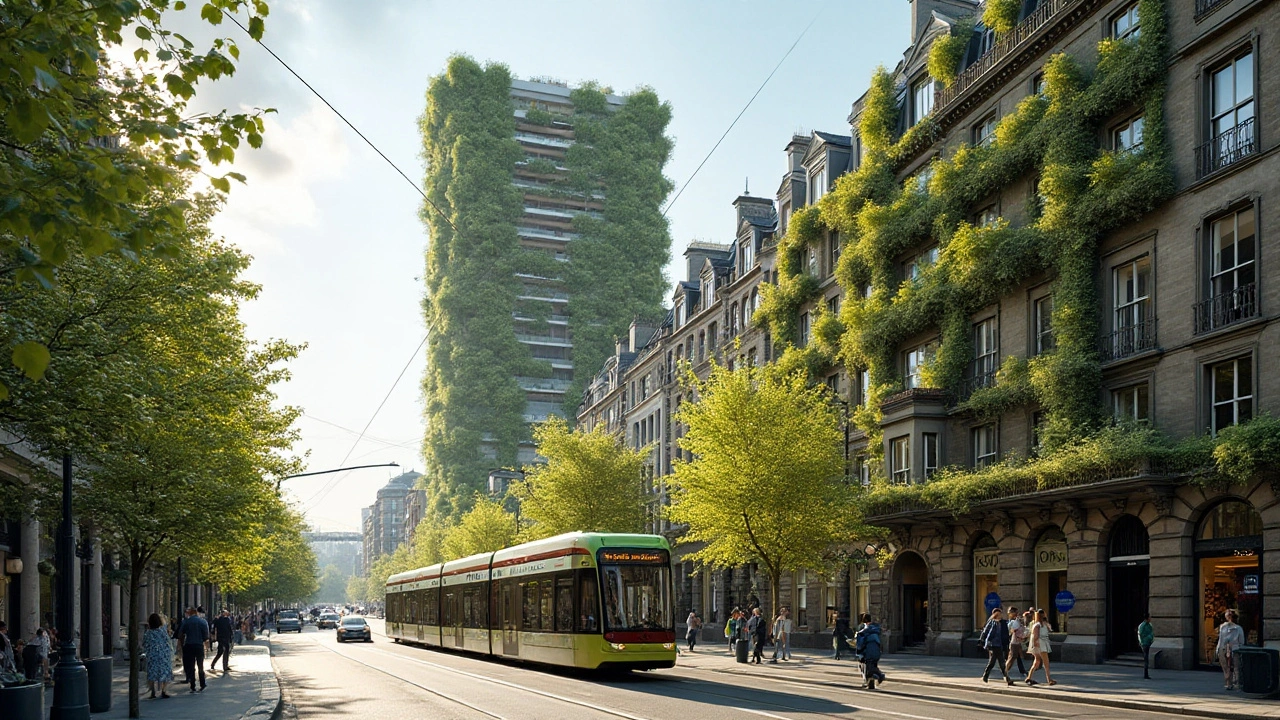Green Cities: Design, Action, and Everyday Wins
Imagine walking down a street that cools itself, cleans the air, and makes you feel calm. Green cities do that by mixing plants, smart buildings, and thoughtful planning. This page shows practical ideas that architects, planners, and neighbors can use to make cities healthier and more livable.
Green cities start with trees and parks. Street trees shade sidewalks, reduce heat, and absorb rain. Parks give people a place to meet and move, and they act like lungs for dense neighborhoods. Designers can use pocket parks and planted medians when big parks aren’t possible.
Buildings that help, not hurt
Green architecture cuts energy use and boosts comfort. Green roofs and walls trap heat and hold rain, slowing storm runoff. Orienting windows to bring in daylight and using shading devices lowers cooling needs. Choose materials with low embodied carbon like reclaimed wood or low-carbon concrete to reduce the building's long-term impact.
Passive design matters. Insulation, tight windows, and simple ventilation changes can cut heating and cooling bills. Small upgrades often pay back quickly. For apartment buildings, adding shared laundry rooms and bike storage nudges residents toward low-carbon choices.
Streets, transport, and water
Make streets for people first. Narrower car lanes, wider sidewalks, and protected bike lanes get more folks walking and biking. Add bus lanes and frequent transit so cars become optional. Reducing parking frees space for trees, seating, or small gardens.
Manage rain where it falls. Permeable pavement, rain gardens, and bioswales keep water out of sewers and reduce flooding. These features are cheap compared with deep storm tunnels and they add street beauty and habitat for birds and pollinators.
Green cities need local action. Community-driven tree planting, neighborhood rain barrel programs, and rooftop garden co-ops cost little but build pride. Local rules matter: zoning that allows small gardens, green roofs, and mixed uses makes green choices possible for more people.
Policy tools help scale change. Energy performance standards for buildings, incentives for retrofits, and simple permitting for green features boost adoption. Public-private partnerships can fund larger projects like district heating, solar canopies, or expanded transit.
Tracking wins keeps projects honest. Measure energy saved, heat reduced, and green space added. Share results with neighbors. When residents see lower bills and nicer streets, support grows and projects spread faster.
Macklowe Art & Architecture covers design ideas and real examples that inspire change. If you want quick wins, start with trees, rain management, and simple energy retrofits. These moves improve health, cut costs, and make cities places people actually want to live.
Quick checklist: plant a tree, install a rain barrel, add window shades, swap to LED lighting, push for a bike lane, talk to neighbors about a pocket park, and demand better public transit. Small moves add up. Start small and scale up as local support grows. Use free design guides or local grants to cut costs.
Want examples? See our projects and case studies on Macklowe Art & Architecture for real city fixes now.

Embracing Green: The Rise of Sustainable Architecture in Urban Landscapes
Sustainable architecture is transforming urban environments, blending innovation with eco-conscious design. The rise of green buildings in cities not only protects natural resources but also enhances the well-being of residents. As urban areas face challenges like climate change and population growth, sustainable design offers both practical and aesthetic solutions. Innovative materials and smart technologies are key components in this architectural revolution. Learn how key cities are leading the way towards more sustainable futures.
Read more